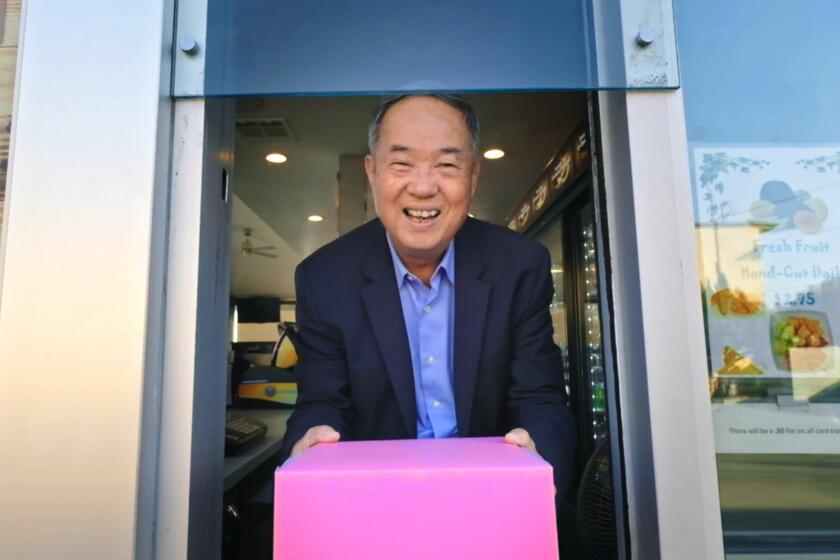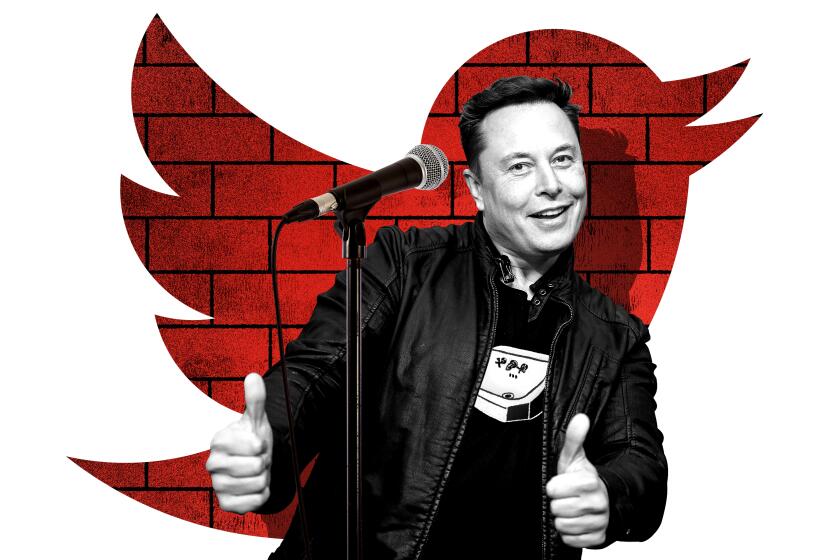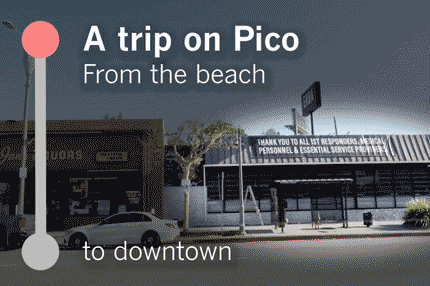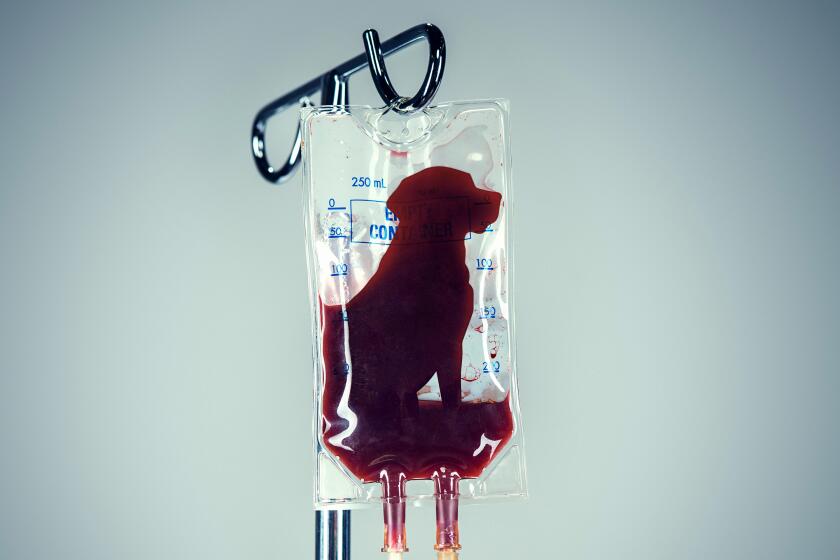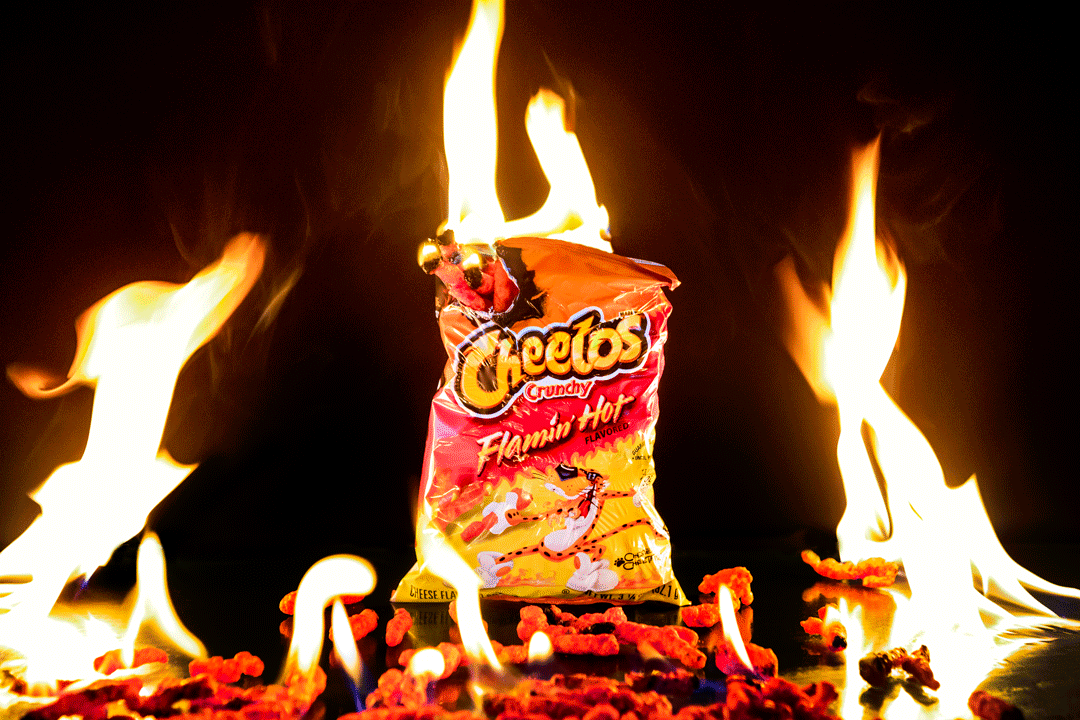
- Share via
For the last decade, Richard Montañez has been telling the story of how he invented Flamin’ Hot Cheetos. The world has been eating it up.
It goes like this: He was working as a janitor at Frito-Lay’s Rancho Cucamonga plant when he dreamed up a chile-covered Cheeto and believed in himself enough to call up the chief executive to pitch his spicy idea.
Corporate backstabbers tried to sabotage Montañez for stepping out of line, but he out-hustled them, driven by a hunger to succeed. Flamin’ Hots became a runaway hit, and Montañez rose through the ranks and became an icon.
Watching his many recorded speaking engagements, it’s easy to see why his story has taken off.
Montañez is a charismatic speaker, and his tale of a Mexican American underdog whose ingenuity conquered the corporate world is a rags-to-riches fable baked into the origin of a wildly popular snack.
With their spicy kick and neon-red flavor dust, Flamin’ Hot Cheetos have inspired viral rap videos, Instagram-worthy menu items and streetwear designs. Schools have banned the snack altogether over concerns about its popularity with children. Clear revenue numbers are hard to come by, but nearly every major Frito-Lay line, from Smartfood popcorn to Funyuns, now has a Flamin’ Hot variety on the market.
Montañez has built a lucrative second career out of telling and selling this story, appearing at events for Target, Walmart, Harvard and USC, among others, and commanding fees of $10,000 to $50,000 per appearance.
His second memoir, “Flamin’ Hot: The Incredible True Story of One Man’s Rise from Janitor to Top Executive,” is out in June from an imprint of Penguin Random House.
A biopic based on his life, to be directed by Eva Longoria and produced by Christian super-producer DeVon Franklin for Searchlight Pictures, is set to begin filming this summer. Both the book and the movie were sold after bidding wars — Montañez’s story is undeniably hot.
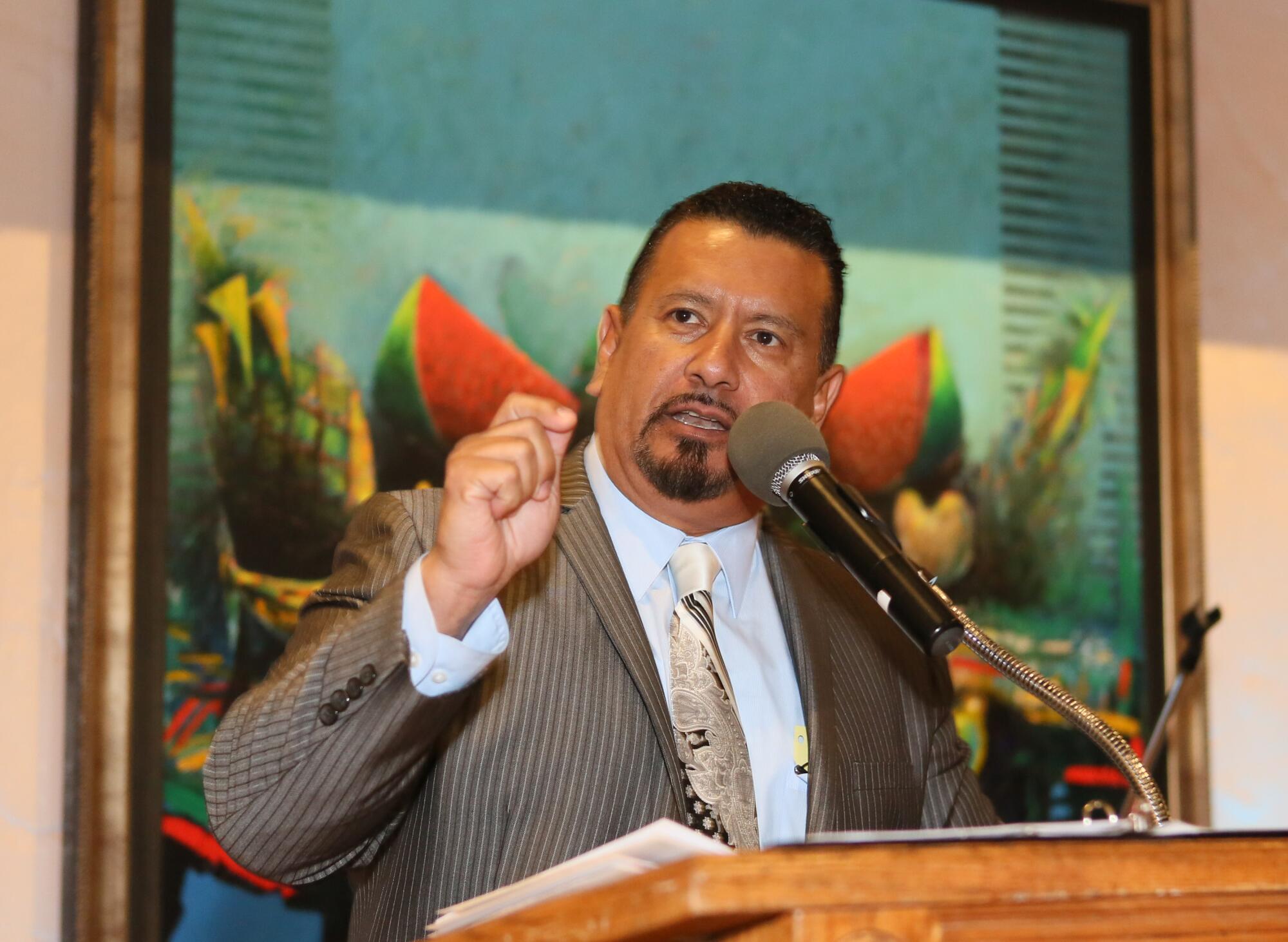
There’s just one problem: Montañez didn’t invent Flamin’ Hot Cheetos, according to interviews with more than a dozen former Frito-Lay employees, the archival record and Frito-Lay itself.
“None of our records show that Richard was involved in any capacity in the Flamin’ Hot test market,” Frito-Lay wrote in a statement to The Times, in response to questions about an internal investigation whose existence has not been previously disclosed. “We have interviewed multiple personnel who were involved in the test market, and all of them indicate that Richard was not involved in any capacity in the test market.
“That doesn’t mean we don’t celebrate Richard,” the statement continued, “but the facts do not support the urban legend.”
Flamin’ Hots were created by a team of hotshot snack food professionals starting in 1989, in the corporate offices of Frito-Lay’s headquarters in Plano, Texas. The new product was designed to compete with spicy snacks sold in the inner-city mini-marts of the Midwest. A junior employee with a freshly minted MBA named Lynne Greenfeld got the assignment to develop the brand — she came up with the Flamin’ Hot name and shepherded the line into existence.
Subscribers get early access to this story
We’re offering L.A. Times subscribers first access to our best journalism. Thank you for your support.
Montañez did live out a less Hollywood version of his story, ascending from a plant worker to a director focused on marketing. He also pitched new product initiatives, which may have changed the path of his career.
But Montañez began taking public credit for inventing Flamin’ Hots in the late 2000s, nearly two decades after they were invented. First, he talked about it in speeches at local business and philanthropy award ceremonies. Then the online media, hungry for a feel-good story, took his claims viral.
And nobody at Frito-Lay stopped him. Most of the original Flamin’ Hot team had retired by the 2000s, but the few who remained let the story spread unchecked.
Greenfeld contacted Frito-Lay in 2018 after first seeing that Montañez was taking credit for Flamin’ Hot Cheetos, triggering a company investigation. That process unearthed evidence calling his account into question and led the company to the conclusion it shared with The Times: “We value Richard’s many contributions to our company, especially his insights into Hispanic consumers, but we do not credit the creation of Flamin’ Hot Cheetos or any Flamin’ Hot products to him.”
The producers of his biopic, despite being informed of problems by Frito-Lay in 2019, announced a cast for the movie in early May.
The producers of the film and the publisher of Montañez’s latest book did not respond to requests for comment before publication of this article.
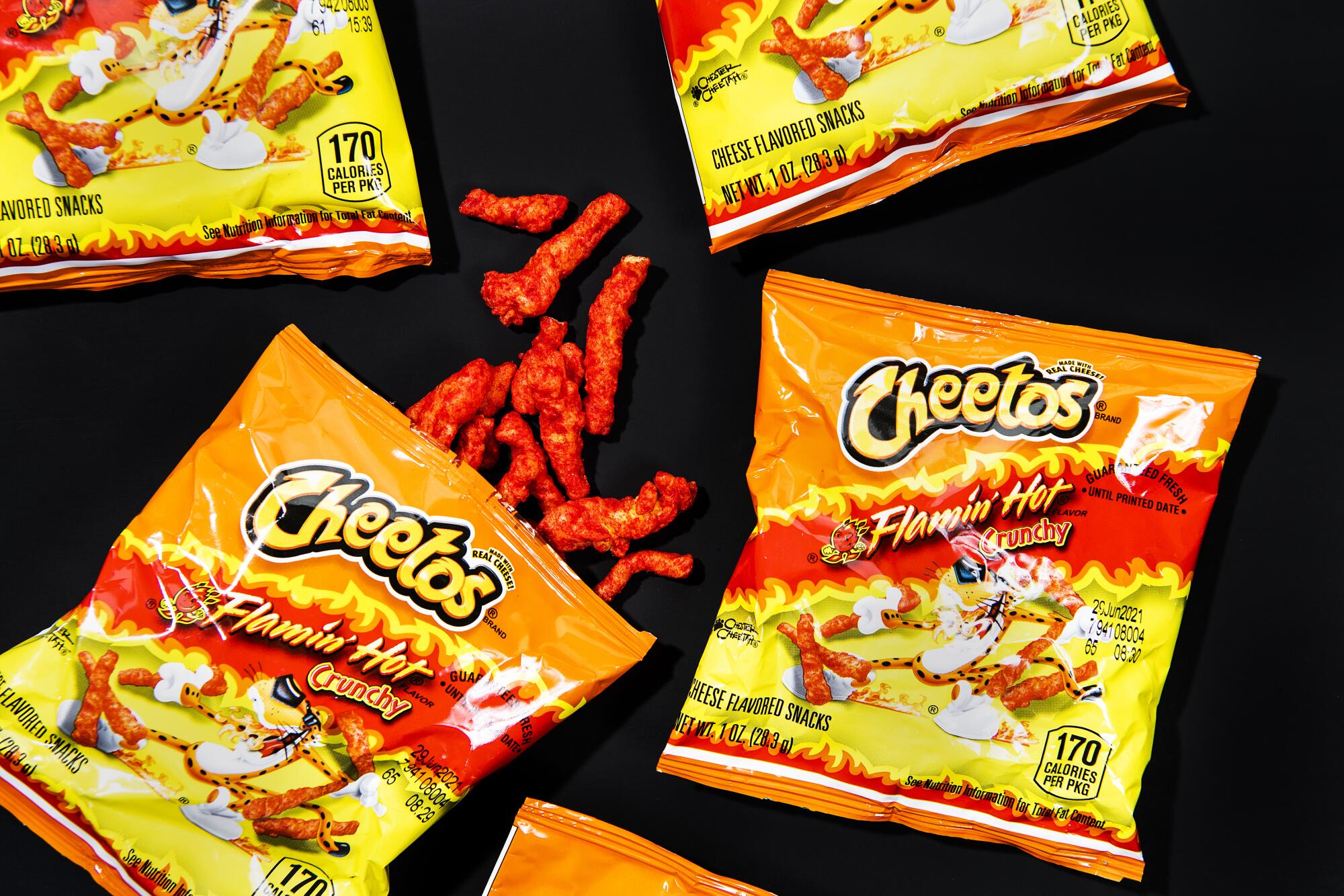
Hot stuff in the market
The core of Montañez’s story rested on the pitch meeting that he says changed his life, where he sold his idea of Flamin’ Hot Cheetos directly to the Frito-Lay elite. In his new memoir, he lays out a dramatic scene, with more than 100 people, most of them “leading executives,” assembled alongside the CEO in a conference room at the Rancho Cucamonga complex to witness his presentation.
The Times spoke with 20 people who worked at the Frito-Lay divisions responsible for new product development 32 years ago, when Flamin’ Hot Cheetos were first extruded into existence. None recalls anything like the episode Montañez describes taking place.
“If that story existed, believe me, we would have heard about it,” said Ken Lukaska, who worked as a product manager for the core Cheetos brand when Flamin’ Hots were rolling out nationally. “This guy should run for office if he’s that good at fooling everyone.”
The idea that grew into Flamin’ Hots didn’t come from Rancho Cucamonga, or California, or even Frito-Lay’s home base in Texas.
Six of the former employees remember inspiration coming from the corner stores of Chicago and Detroit. One of the earliest newspaper articles about the product corroborates that detail: A Frito-Lay spokesperson told the Dallas Morning News in March 1992 that “our sales group in the northern United States asked for them.”
Fred Lindsay, a retired Frito-Lay salesman from the South Side of Chicago, feels that he can be more specific: “I’m the one that was responsible for getting us into Flamin’ Hot products.”
The late ’80s were a cutthroat time in corporate foodstuffs, and PepsiCo Inc., Frito-Lay’s parent company, was fighting a marketing war on three fronts. In its restaurant division, Pizza Hut was clawing its way into delivery to fend off Domino’s, and Taco Bell resorted to free soda refills to undercut the competition.
Pepsi’s beverage business was locked in the decadelong Cola War, with its flashy CEO, Roger Enrico, pouring millions into ad deals with Michael Jackson and Madonna to peel people away from King Coke.
Frito-Lay’s battle was quieter but just as brutal. The company had been the reigning champ of salty snacks for decades, ever since Frito Co. and H.W. Lay & Co. had first merged, but Anheuser-Busch had come out swinging with its national Eagle Snacks line, and Frito-Lay was losing ground.
The answer could only come out of Southern California
Lindsay for years worked the sales beat in Chicago and the Great Lakes region, where he witnessed spicy products from regional competitors “just blow off the shelf” at corner stores and gas stations. So he started beating the drum for the marketing department to gin up something. “I was fighting mad to try and get hot stuff in the market,” Lindsay said.
By the time he got promoted to corporate headquarters in Plano, working for the UDS business — shorthand for “up and down the street,” meaning any liquor store, sundry shop or mini-mart smaller than a grocery store — his idea had been taken up by the marketing department.
“The funny thing is, I heard maybe a year ago that some guy from California was taking credit for developing hot Cheetos, which is crazy,” Lindsay said. “I’m not trying to take credit; I’m just trying to set the record straight.”
The assignment to create spicy competitor products landed in the inbox of Sharon Owens, a product manager in the Single Serve group at the time. Unlike the mainline brands — Fritos, Doritos, Cheetos and Lays — whose managers were expected to serve as custodians of just one product, Single Serve was organized around a format: individually wrapped products made for cramped mini-marts and customers with just a few quarters to spend.
Owens recalls that she assigned the project to a new employee: Greenfeld.
It is disappointing that 20 years later, someone who played no role in this project would begin to claim our experience as his own and then personally profit from it.
— Lynne Greenfeld, former Frito-Lay employee
For the record:
1:50 p.m. May 16, 2021An earlier version of this article said Lynne Greenfeld and Miguel Lecuona attended business school at Northwestern. The business school they attended was at the University of North Carolina at Chapel Hill.
Flamin’ Hot was Greenfeld’s first project at the company when she started in the summer of 1989, fresh out of the MBA program at the University of North Carolina at Chapel Hill. Business degrees were practically required to get in the door at PepsiCo in those days, with rare exceptions made for people with B.A.s from Babson College, Enrico’s alma mater.
Miguel Lecuona, an MBA classmate of Greenfeld’s, joined the Single Serve team at the same time, working on beef sticks, sweet snacks and other odd products that would sit by a mini-mart register. “I was on the cookie,” Lecuona said, “and Lynne Greenfeld was on the small-bag business.”
“We’d go on a field marketing tour and bring home 50 different bags of chips that we had never seen in our lives — they’d say we’re losing sales to this kind of product line right now,” Lecuona said, “and so Flamin’ Hot was actually, you could call it a flavor idea.”
Over the next few months, Greenfeld went on market tours of small stores in Chicago, Detroit and Houston to get a better feel for what consumers craved. She worked with Frito-Lay’s packaging and product design teams to come up with the right flavor mix and branding for the bags. She went with a chubby devil holding, a Cheeto, Frito or chip on a pitchfork, depending on the bag’s contents, she recalls, a memory independently corroborated by newspaper archives.
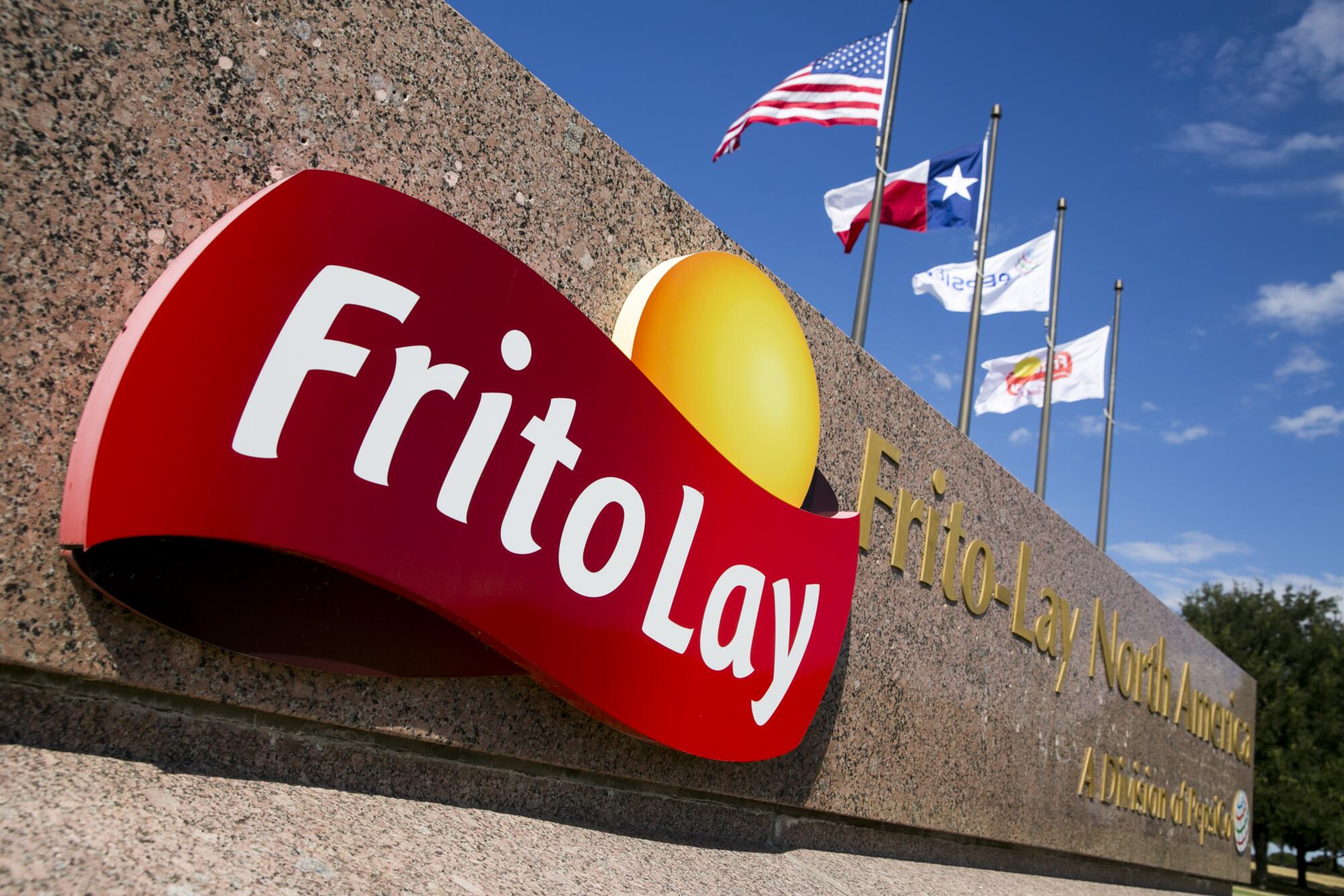
By the summer of 1990, the product entered its test market. Frito-Lay’s trademark for the Flamin’ Hot name lists that August as the month the product made its debut.
A trio of Flamin’ Hot snacks — Fritos, Cheetos and Lays — hit small stores in Chicago, Detroit, Cleveland and Houston, according to the Dallas Morning News article and newspaper ads for the new products in those regions.
Frito-Lay corroborated many of the details of this account, writing that “as early as 1989, there were regional competitive spicy products on the market,” including a spicy, bright-red potato chip from the Chicago snack company Jays.
“In response, Frito-Lay launched a test market of spicy Lay’s, Cheetos, Fritos and Bakenets in Chicago, Detroit and Houston” beginning in August 1990, the company wrote in a statement.
Frito-Lay wrote that “a product or flavor extension is the work of a number of people across functions as diverse as R&D, sales and marketing, all of whom are proud of the products they help create.”
An internal promotional video for the Cheetos brand from the first quarter of 1991 serves as further proof that Flamin’ Hots were already out in the world.
The nearly nine-minute video, which Lukaska shared with The Times, is a Day-Glo green-and-pink time capsule, with Frito-Lay execs in fashionably baggy suits touting the latest and greatest snack aimed at kids, Cheetos Paws. At one point, two DDB Needham advertising executives perform a “New Jack City”-era rap about the coolness of Chester himself. Flamin’ Hots appear in the video for less than a second, in a rapid-fire slideshow set to MC Hammer’s “U Can’t Touch This,” alongside two other minor brands of the day, Cheetos Curls and Cheetos Light.
The test markets soon proved that Lindsay’s insight was right, and Greenfeld’s execution worked. Flamin’ Hot Cheetos and Lays rolled out across the country by early 1992 and would slowly grow to become a cult hit.
Greenfeld, who now goes by her married name, Lemmel, said she’s “very proud” of leading the team that put Flamin’ Hots into the world, and for coming up with the Flamin’ Hot brand name.
“It is disappointing that 20 years later, someone who played no role in this project would begin to claim our experience as his own and then personally profit from it,” she added.
‘Act like owners’
Montañez did not respond to multiple requests for comment via email, phone, direct message, attempts to reach him through a publicity agent, and questions delivered to a family member at a home listed in Montañez’s name.
Hours after initial publication of this story, Montañez posted a video to his Instagram account, addressed to “all you young leaders.”
“I don’t care what room you’re in, there’s always somebody in the room that’s going to try to steal your destiny. They may even say you never existed,” Montañez says to the camera. “I want you to do this: Write down your history, because if you don’t, somebody else will. Remember that. And also remember this, the best way to destroy a positive message is to destroy the messenger. Never allow that to happen to you. I’m certainly not going to allow it to happen to me.”
The record of Flamin’ Hot Cheetos first entering the market in 1990 points to an impossibility at the heart of Montañez’s story all along.
In telling after telling, Montañez says he felt empowered to invent Flamin’ Hot Cheetos after watching a motivational video from Enrico, the CEO of the company, that encouraged all Frito-Lay workers to “act like owners” and take charge of the business.
And time after time, he says that Enrico was the CEO whom he boldly called to pitch his idea and that Enrico flew out to Rancho Cucamonga weeks later to witness his pitch in person. In his new memoir, Montañez clearly restates this claim: Enrico’s name appears 60 times in the text.
But Enrico did not work at Frito-Lay when Flamin’ Hot products were developed. His move to Frito-Lay was announced in December 1990, and he took over control at the beginning of 1991 — nearly six months after Flamin’ Hots were already out in the test market.
When the Flamin’ Hot line first entered test markets in the summer of 1990, Robert Beeby was leading Frito-Lay. Wayne Calloway was running the parent company, PepsiCo. Enrico was the president and CEO of PepsiCo Worldwide Beverages, the separate soft drink division of PepsiCo, leading the company in the Cola Wars.
‘Like an alien’s version of comedy.’ ‘The sense of humor of a horny dentist.’ Nikki Glaser, Hari Kondabolu and other comedians on Elon Musk’s desperate quest to be funny.
Enrico went on to lead PepsiCo as a whole by the end of the ’90s, and the first media mention of his “I Own the New Frito-Lay” campaign came in a May 1992 feature in Ad Day. He retired in 2001, and he died while snorkeling in the Cayman Islands in 2016. The Times found no public comments from him on Flamin’ Hot Cheetos or any Flamin’ Hot product.
Patti Rueff, who worked as Enrico’s secretary for decades as he moved from the beverage business to Frito-Lay and on to the top of the parent company, vividly recalls Montañez calling her office to speak with Enrico — once he was already leading Frito-Lay, in 1992 or 1993, and after Flamin’ Hot products were already on shelves.
One other Frito-Lay executive played a key role in Montañez’s Flamin’ Hot story: Al Carey, a Frito-Lay lifer who worked at the company for nearly 40 years, rising through the executive suite to the top of the corporate pyramid.

Carey appears to be the only Frito-Lay executive who worked at the company at the time of Flamin’ Hot development to publicly endorse Montañez’s version of events over the years.
In 1990 Carey was working as vice president of national sales out of the Plano offices. When Enrico came in, he promoted Carey to oversee a new vending machine and warehouse division in early 1992, and then to division president of Frito-Lay West, based in the Bay Area, at the end of that year.
Carey became president and CEO of Frito-Lay North America in 2006. In 2007, Montañez began telling his story in public, and the pair have made joint appearances at a number of public events over the course of their careers.
Montañez writes in his new memoir that he met Carey in the late 1980s, when the exec was taking a tour of the Cucamonga plant. When Montañez later called him for advice on pitching his idea for spicy Cheetos, he says, Carey encouraged him to call Enrico directly.
Of course stories grow, and the longer we get away from the date the stories evolve. I’ll bet Richard’s added a little flavor to it.
— Al Carey, former president and CEO of Frito-Lay North America
In an interview, Carey, 69, initially said that he first met Montañez after becoming division president for Frito-Lay West in December 1992, and that Montañez pitched him a set of products targeted at the Latino market. When asked how that timeline fits with the 1990 Flamin’ Hot trademark and test market, Carey insisted that Montañez is the creator of Flamin’ Hot Cheetos.
“The product that we know today as Flamin’ Hot Cheetos was definitely not out in the market” before his meeting with Montañez, Carey said. “That product was developed by those guys in the plant.”
When asked to explain the news clippings and former employee accounts that place Flamin’ Hot Cheetos in the market two years earlier, Carey hedged his statement. “This is such a long time ago, I bet there was a spicy Cheeto in the Chicago, L.A., maybe Houston market, too,” Carey said.
“Of all the people who are in PepsiCo or around PepsiCo, I have the most experience,” he continued. “I can promise you for sure there was no brand development, no brand launched called Flamin’ Hot Cheetos,” Carey said, adding that if there was a prior spicy product on the market, it was reformulated to match Montañez’s sample product. “The ingredients, that’s the magic of the product,” Carey said.
Frito-Lay’s statement contradicted its former CEO. “According to our records, McCormick, Frito-Lay’s longtime seasoning supplier, developed the Flamin’ Hot seasoning and sent initial samples to Frito-Lay on Dec. 15, 1989,” the statement said. “This is essentially the same seasoning Frito-Lay uses today.”
Carey said he was unsure how to account for that contradiction. “I’m sure if you went back into the Frito-Lay history, OK, there’s probably something in 1990 that was a test market on a spicy product,” he said. “I’ll be surprised if it was this same ingredient, but it could have been, I guess.”
When asked about the pitch meeting central to Montañez’s account, Carey said that Enrico was not in attendance.
“Of course stories grow, and the longer we get away from the date the stories evolve,” Carey said. “I’ll bet Richard’s added a little flavor to it.”
He said that he “suggested strongly” that Montañez retire when he did, in 2019, if he wanted to pursue his career as a motivational speaker, memoirist and film subject.
“You’re theoretically not supposed to be giving a speech and being paid for it if you’re still a part of the company,” Carey said. “I said this is a fun story; this shouldn’t be a controversial story; your inclination to dramatize the story a little bit, you’ve got to keep away from that.”
But he repeated that Montañez was key to Flamin’ Hot Cheetos’ success. Lots of products have grown into hits, he said, only after a charismatic leader comes along. “They may have not invented the ingredient, but they invented the energy that goes behind this thing and the positioning, and then it becomes successful,” he said.
“Without Richard, this thing would not be out there,” he concluded.
Kernel of truth
Beneath Montañez’s story about Flamin’ Hot Cheetos, visible through its inconsistencies and supported by the documented timeline of events, there is a real story of a man rising up the corporate ladder, from factory floor to marketing executive, pitching some products along the way.
Montañez was born in Ontario to a Mexican American family that lived in the unincorporated community of Guasti, a cluster of buildings and shops centered on vineyards east of Los Angeles, where some of the men in his family picked grapes for a living.
He dropped out of school — but not, as he has claimed in past media appearances, after the fourth grade, or, as he claims in his new memoir, before the sixth. Montañez appears to have made it to at least the ninth grade — he is listed in the freshman class section of the Chaffey High yearbook of 1972 but disappears from the area’s yearbooks after that.
Montañez got a job at the Frito-Lay plant in Rancho Cucamonga in the late 1970s. Although Montañez has at times said he was working as a janitor when he pitched Flamin’ Hot Cheetos, Frito-Lay said its records show he was promoted to machinist operator by October 1977, shortly after his hiring. In that role, he writes in his new memoir, he spearheaded a program to reduce waste along the assembly line.
After Enrico moved to Frito-Lay and the motivational “I Own the New Frito-Lay” campaign rippled across the company, a single news clipping featuring Montañez provides a window into that moment in his career.
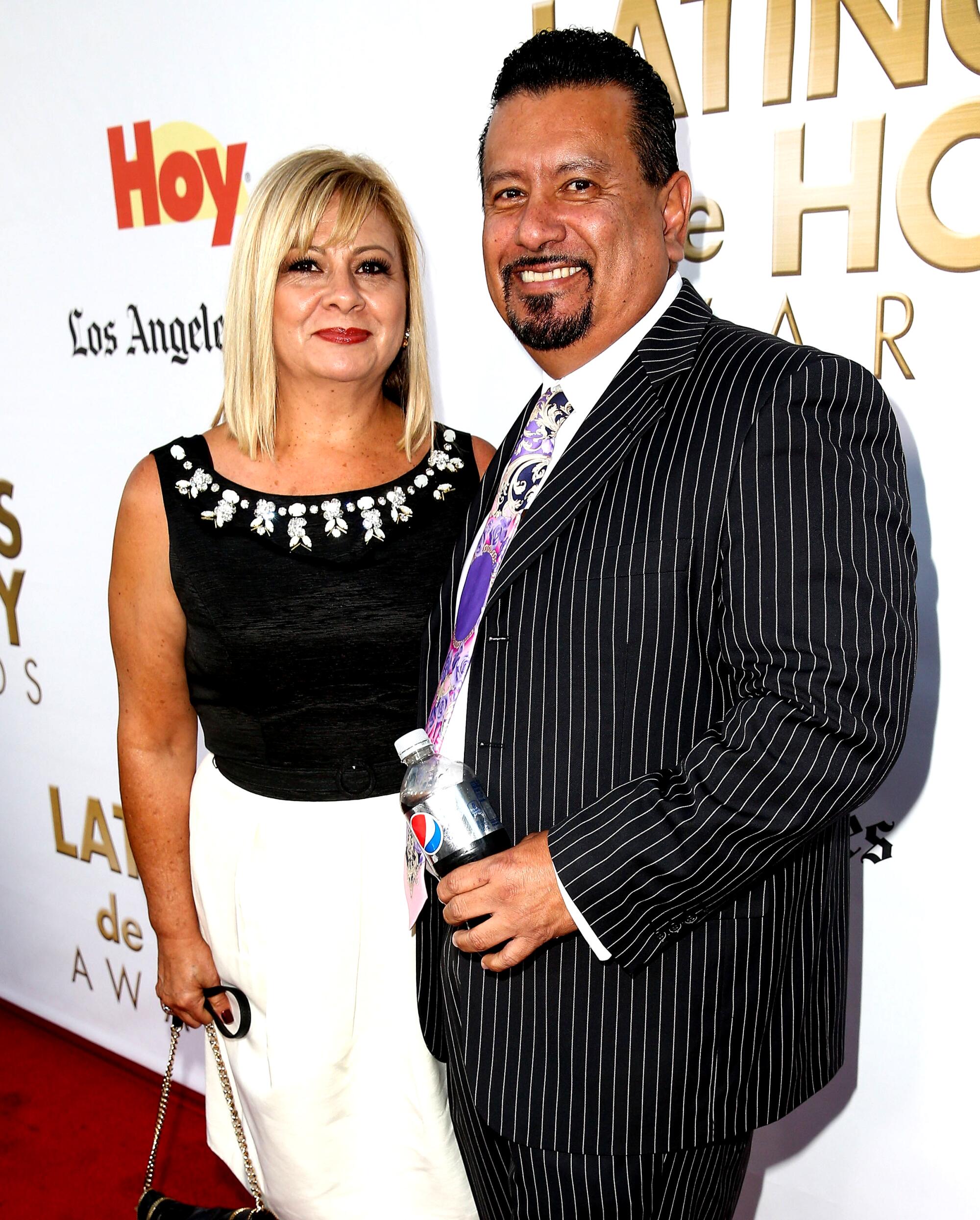
The U.S. News and World Report article from December 1993 focuses on businesses finding success by empowering their employees. The section on Frito-Lay talks about the plant in Rancho Cucamonga, where manager Steve Smith had taken up Enrico’s initiative and gotten more front-line workers thinking about how to improve the business as a whole.
“Veteran machine operator Richard Montañez, 37, became so energized by Smith’s new operating style that after listening to salesmen he developed a new ethnic-food concept aimed at the Hispanic market,” the reporter writes. “After testing recipes and outlining a marketing strategy, Montañez burst forth with a kernel of an idea: Flamin’ Hot Popcorn, which will soon make its debut.”
An industry news wire announced that Flamin’ Hot Popcorn did in fact hit shelves in March 1994, as an extension of the Flamin’ Hot line that Greenfeld and her colleagues had rolled out four years earlier.
Around that time, Montañez began working on a line of products pitched specifically at the Latino market in the Los Angeles area: Sabrositas. Images that Montañez has posted to his Instagram account show that the Sabrositas line included Flamin’ Hot Popcorn, two types of Fritos — Flamin’ Hot and Lime and Chile Corn Chips — and a Doritos variety billed as buñuelito-style tortilla chips.
Roberto Siewczynski worked on the Sabrositas test market in 1994 as an outside consultant for Casanova, a Latino-focused wing of the ad agency McCann, and remembers Montañez being deeply involved in the process.
Siewczynski’s recollection of the Sabrositas marketing campaign aligns with what Montañez describes in his memoir — though Montañez attaches his story to Flamin’ Hot products, not the Sabrositas launch.
“I did go to Rancho Cucamonga,” Siewczynski said, where he was surprised to learn that the Sabrositas project was being led by production and distribution workers, not the marketing department, as a community-driven campaign focused on the Latino market in Los Angeles. “It was, ‘Hey, the plant really wants to do this; Richard really wants to do this,’ and they cut out a lot of the traditional management.”
He remembers Montañez as a colorful, engaging storyteller, well liked by all of his co-workers at the plant. And he remembers a creation story, but one that focused on Lime and Chile Fritos, not Flamin’ Hot Cheetos.
Montañez “told the whole story about how when he was a kid he would put lime and chile on his Fritos, and that was sort of the impetus for the product design,” Siewczynski said.
Some businesses cut hours, services and staff, or closed altogether. But many have survived beyond their expectations.
In his new memoir, Montañez writes that he tapped into the local network of women hosting Tupperware parties to get Flamin’ Hot Cheetos out to customers in Southern California as a way to bolster the struggling test market.
Siewczynski recalls the same story — for Sabrositas. “The product was rolled out without any mass media or advertising,” he said. “We did a strategic partnership with Tupperware, where they would take the product to their parties,” he added, recalling a mortifying presentation that he made as a 22-year-old ad man to a room of hundreds of Tupperware ladies, who ribbed him onstage for being so young and handsome.
Frito-Lay records shared with The Times show that Montañez was promoted to a quality-control tech services specialist from 1998 to 2002, then left the plant and rose to a director-level position. He received a number of accolades from both community groups and PepsiCo CEOs along the way.
He’s now retired in his early 60s, after a full career climbing the corporate ladder. Montañez made it, from rags to riches, from factory floor to corporate suite. He just didn’t make Flamin’ Hot Cheetos.
The investigation
Flamin’ Hot Cheetos became a cultural phenomenon in the 2000s. As early as 2005, school administrators considered banning them in the classroom because of their distracting popularity with students; Pasadena schools eventually prohibited them in 2012. Their first meme moment came in that same year, in a 2012 viral rap video, “Hot Cheetos and Takis,” a song written and performed by a group of kids as part of an after-school program in north Minneapolis. The years since have seen pop-up restaurants and fashion lines, and countless Instagram-ready Flamin’ Hot Cheetos menu items at restaurants across the country.
Montañez’s story of the janitor who had invented Flamin’ Hot Cheetos picked up traction, serving as fodder for blog posts and online videos. Montañez’s own Instagram account accumulated tens of thousands of followers, and his TikTok following now tops 100,000.
But the people who had worked on the original Flamin’ Hot line weren’t watching viral videos or reading food blogs targeted at young audiences. Most of them had already left the company by the early 2000s. Most had already retired.
Greenfeld, the Flamin’ Hot team leader, didn’t see the story of the scrappy janitor who invented Flamin’ Hot Cheetos until the summer of 2018, when she happened upon a blog post on the Esquire website.
Greenfeld was shocked to see someone taking credit for a product that she had worked on. She reached out to an acquaintance who was still working at Frito-Lay, according to emails viewed by The Times, asking if they had ever heard of the Montañez story, and if they knew anyone she could alert in the legal department that someone was claiming to have invented Flamin’ Hot Cheetos.
Michele Thatcher, chief counsel in PepsiCo’s global human resources department, wrote that she and the legal team “know Richard well,” were aware of his book and movie projects, and were unsure what problem, if any, there might be with his story. Over the decades, the institutional memory had been lost.
Further email correspondence shows that the company launched an investigation into the question of Flamin’ Hot’s origin after Greenfeld’s initial email.

In a December 2018 message, Leanne Oliver, general counsel at Frito-Lay North America, wrote that she didn’t think there was “any question” that the Flamin’ Hot test market predated “the Cucamonga meeting” where Montañez pitched some kind of product.
In a later email, another Frito-Lay lawyer, Susan Chao, wrote, “We know you and the Law Dept worked together to trademark ‘Flamin’ Hot’” but asked Greenfeld if she remembered who had invented the name. “I came up with the Flamin’ Hot name on my own,” Greenfeld replied.
The investigation soon came to an effective dead end. Montañez retired in March 2019. Carey, his corporate mentor, retired that same month.
The next month, Oliver wrote in an email that “Frito-Lay will continue to take the position that Flamin’ Hot Cheetos was created by a team of people and, as with all of our products, we do not credit one person with a product invention or flavor extension.”
Carey and Montañez appeared together soon after, at a June 2019 ceremony where Carey accepted a lifetime achievement award from the East Los Angeles Community Union. In a video created for the event, Montañez shifts his story, saying that it was Carey, and not Enrico, who created the motivational video that inspired him to create Flamin’ Hot Cheetos in the first place, though he has since returned to his version of the story featuring Enrico.
Carey currently sits on the board of the Home Depot, serves as executive chairman of the North Carolina textiles company Unifi and is on the board of a blank-check vehicle, Omnichannel Acquisition Corp.
Indra Nooyi, who was chairman and CEO of PepsiCo while Carey was running Frito-Lay and the Pepsi beverage business, has blurbed Montañez’s new memoir, calling it a “tour de force.” (Nooyi also retired in 2019.) Tom Greco, who took over at Frito-Lay once Carey moved to Pepsi, has also blurbed the book. Nooyi joined PepsiCo in 1994, and Greco worked in Frito-Lay’s Canadian division until the early 2000s.
Montañez has spent much of his time since retirement working the speaker circuit, according to his social media accounts, delivering keynotes at in-person and virtual events for organizations such as Prudential Financial, the Philadelphia Eagles, recruitment tech company Indeed, call center technology company Genesys, and at Pestworld 2019, the annual conference of the National Pest Management Assn.
After the investigation and his retirement, Montañez has also repeatedly posted to his social media accounts photographs of what he claims are original design materials for Flamin’ Hot Cheetos. Many have recently been deleted.
One photograph, posted to Instagram in October 2019 but now deleted, shows four pieces of lined notebook paper, labeled “mild,” “reg,” “hot” and “extra hot,” with Cheetos piled on top of each. At the bottom of one, Montañez signed his name and wrote the date “1988.”
In another post, now deleted, he wrote that he worked on the Doritos Salsa Rio flavor in 1998 — a product that first hit test markets in 1987, according to Advertising Age articles from that year.
In public statements since conducting its internal investigation, Frito-Lay has struck a cautious tone.
In an August 2019 interview with Fast Company about Montañez’s biopic, Frito-Lay Chief Marketing Officer Jennifer Saenz said that the company helped the film’s producers piece together the historical information that exists on Flamin’ Hot Cheetos.
Saenz then substantially repeated the statement that the company had sent to Lynne some months earlier: “At Frito-Lay, and PepsiCo, a product or flavor extension is the work of a number of people across functions as diverse as R&D, sales and marketing, all of whom are proud of the products they help create.”

In April 2020, a new chief marketing officer, Rachel Ferdinando, appears in a CNBC video feature about Flamin’ Hot products. She stops short of calling Montañez the inventor of the product.
But she does name Montañez, saying that “Richard’s insights into the Hispanic consumer really helped us shape and think about how we should talk to that consumer,” adding that his thinking insight “was something we relied on very heavily.”
The filmmakers behind Montañez’s biopic were informed of potential problems with his story two years ago. In April 2019, Frito-Lay’s legal team forwarded a letter that Greenfeld wrote outlining her version of events to Franklin, whose production company, Franklin Entertainment, is co-producing Montañez’s biopic along with Searchlight Pictures.
It’s unclear whether the producers ever informed Longoria, who’s set to direct the film. And like many Hollywood projects, the movie could use Montañez’s story as a jumping-off point for a fictional story.
In early May, Longoria announced that she had chosen the actors to play Montañez and his wife, and that the film would begin shooting this summer in New Mexico.
She told Variety that it has been her “biggest priority to make sure we are telling Richard Montañez’s story authentically.”
More to Read
Inside the business of entertainment
The Wide Shot brings you news, analysis and insights on everything from streaming wars to production — and what it all means for the future.
You may occasionally receive promotional content from the Los Angeles Times.
